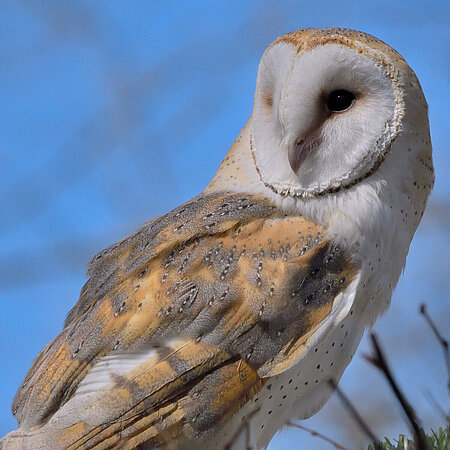Barn Owl
Tyto alba

- Family
- Barn owls (Tytonidae)
- Weight
- 300– 450 g
- Habitat
- Deserts, semi-deserts, steppes, grasslands, forests, bushland, mountain foothills
Exceptional hearing
Barn owls mainly hunt at dusk and dawn, and at night. Their prey includes mice, rats and birds. They have exceptional hearing that enables them to detect prey by sound alone even in total darkness, locating even the quietest sound to the exact millimetre. Its heart-shaped face acts like a funnel that collects and channels sound waves towards the ears.
Pellets
Owls devour their prey whole. They later regurgitate indigestible elements such as bone and fur in the form of pellets. The pellets vary in colour, size and shape, according to the species. Barn owl pellets are black, shiny and hard. Owls rest on the same branch every day, which is why you can often find a pile of pellets under a tree where an owl roosts.
As a synathropic bird, barn owls use human buildings such as old barns, as natural structures are becoming fewer and fewer.
Distribution
